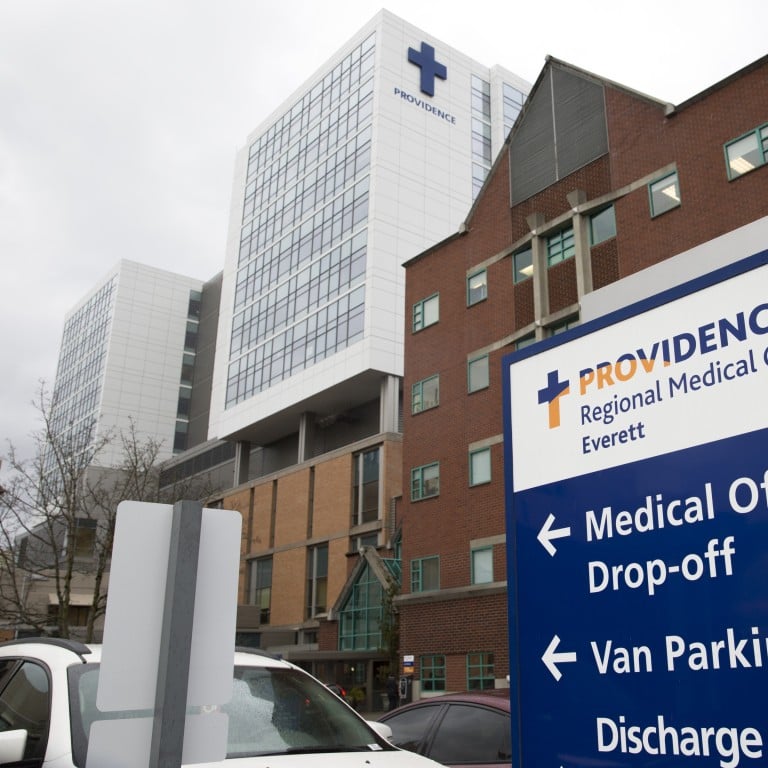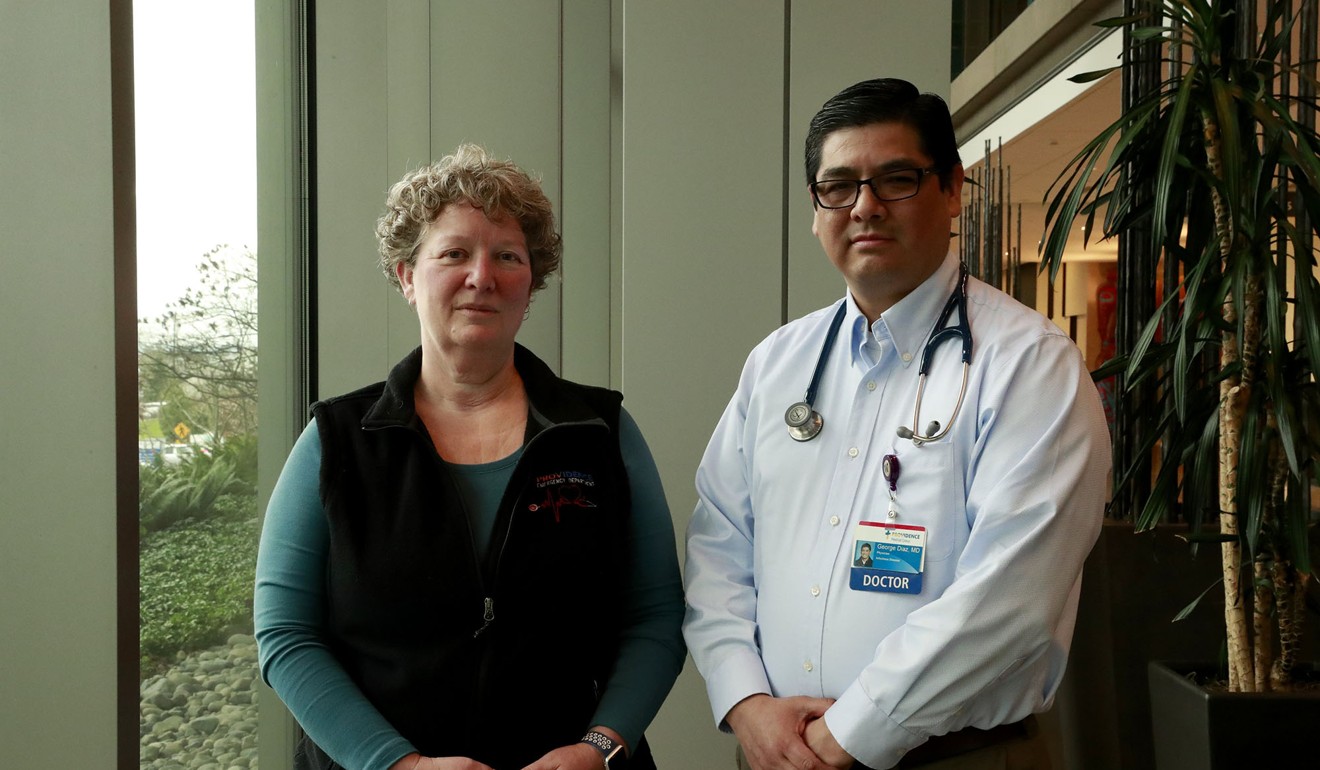
US coronavirus patient who was ‘world’s first’ treated with experimental Gilead drug ‘remdesivir’ and recovered
- Man who visited Wuhan fell ill after returning home to the United States on January 15
- Doctors administered experimental antiviral Gilead drug after patient showed signs of developing pneumonia
For Robin Addison, January 20 was like any other Monday night. She had just slipped into her pyjamas after a long day of work at Providence Regional Medical Centre in Everett, Washington when, around 8:30pm, she got a phone call from a fellow nurse.
“Robin, I think we have to open the unit,” she recalls Sarah Wilkerson saying.
“The unit” is a pop-up biohazard chamber that can be erected to quarantine someone with an infectious disease. The hospital obtained it in 2015 with Ebola patients in mind. It had never been used.
Addison pulled her scrubs on and went back to the hospital.

It's the first person in the world who got this medication for novel coronavirus
The novel coronavirus – officially named SARS-CoV-2 or known by the illness it causes, Covid-19 – has infected more than 71,000 people globally and killed more than 1,700, most of them in China, where the outbreak began in December. It has spread to more than two dozen countries, including the United States, which has confirmed 15 cases and no deaths.
When the Snohomish County patient was diagnosed, little was known about the new virus or how it spreads. It had no treatment or vaccine.
The man, 35, had been visiting family in Wuhan. He flew into Seattle-Tacoma International Airport on January 15, two days before flights from China's Hubei province began being funnelled through three US airports that could screen passengers for signs of illness. That has now been expanded to 11 airports, of which Seattle is one.
When he got home, he developed a dry cough and low fever and, having read news of the new coronavirus, promptly visited an urgent care clinic. The Snohomish Health District sent samples to the Centres for Disease Control & Prevention (CDC) in Atlanta for testing.
The results came back positive. So Addison got the call, and her team got busy.
As luck would have it, Providence staff had done a dry run earlier that month to practise receiving an Ebola patient. Ebola is a serious and often fatal illness.
Addison and Wilkerson had led the drill with the hospital's BEST Team – Biocontainment, Evaluation and Specialty Treatment – which was created after a man with Ebola sickened two nurses in a Dallas hospital.
Coronavirus case in US treated with experimental Gilead drug may spur wider tests
The team of volunteers understood it wasn't likely to encounter Ebola in Everett, but it's best to prepare for the worst and be able to scale back depending on what infectious disease shows up, said Dr George Diaz, the hospital's section chief for infectious diseases, who led the treatment of the Covid-19 patient.
Two hours after Addison got Wilkerson's call, the biohazard team had erected the isolation unit. They'd needed to move patients who were in the designated space and put up movable walls to create a room with negative pressure so no air could escape.
Donning protective gear, the nurses greeted the patient as he arrived in a mobile isolation unit, which Addison described as looking like a bigger version of pods used for premature babies.
Once the patient was in the unit, Diaz examined him from the next room using what is called a tele-health system, basically a video call that allows a doctor to speak to and see the patient.
From there, a lot of the work was fairly routine. A rotating staff of 20 nurses, three doctors and personnel from every corner of the hospital kept the patient as comfortable as possible. They took his vitals regularly. They gave him an IV to replenish his fluids.
World on alert for coronavirus spread as passengers fly home from two cruise ships
But the gear the medical team had to wear made these basic tasks difficult. There was the respirator helmet, which came with a plastic faceguard. They doubled up on gloves. The whole outfit got so hot that the nurses had to swap out every four hours at the most.
“Doing things that we do every day, like starting an intravenous, when you have two pairs of gloves on, it becomes a whole different skill because you're used to being able to feel for a vein,” Addison said.
Five days in, the man's condition started to worsen. On the sixth day, he had to be given oxygen, and a lung X-ray showed he was developing pneumonia.
After discussions with doctors at the CDC and the patient, Diaz got approval from the Federal Drug Administration to administer an experimental antiviral drug called remdesivir.
Remdesivir has been tested in Ebola patients and proved to be safe but not effective against that virus. Researchers have reported some success using it to treat monkeys who have Mers-COV, which is another coronavirus. China has begun enrolling Covid-19 patients into a clinical trial of the antiviral, which was developed by the pharmaceutical company Gilead.
The patient's fever went away the day after treatment, and he began feeling better. It is too early to know how well the treatment will do in others, but the results are promising, Diaz said.
How man spread coronavirus from Singapore to UK via the Alps
“It is only one case,” Diaz said. “It's the first person in the world who got this medication for novel coronavirus, but it seems to have worked.”
Once the patient was doing better, it was a matter of working with the CDC and the health district to determine when he could be discharged and how he would be monitored after that. He lives alone, which made the prospect of quarantining him easier.
Sometime between January 31 and February 3, the patient was stealthily taken home. The isolation unit has been taken down, the area sterilised. At the hospital on the northern edge of downtown Everett, life goes on.

